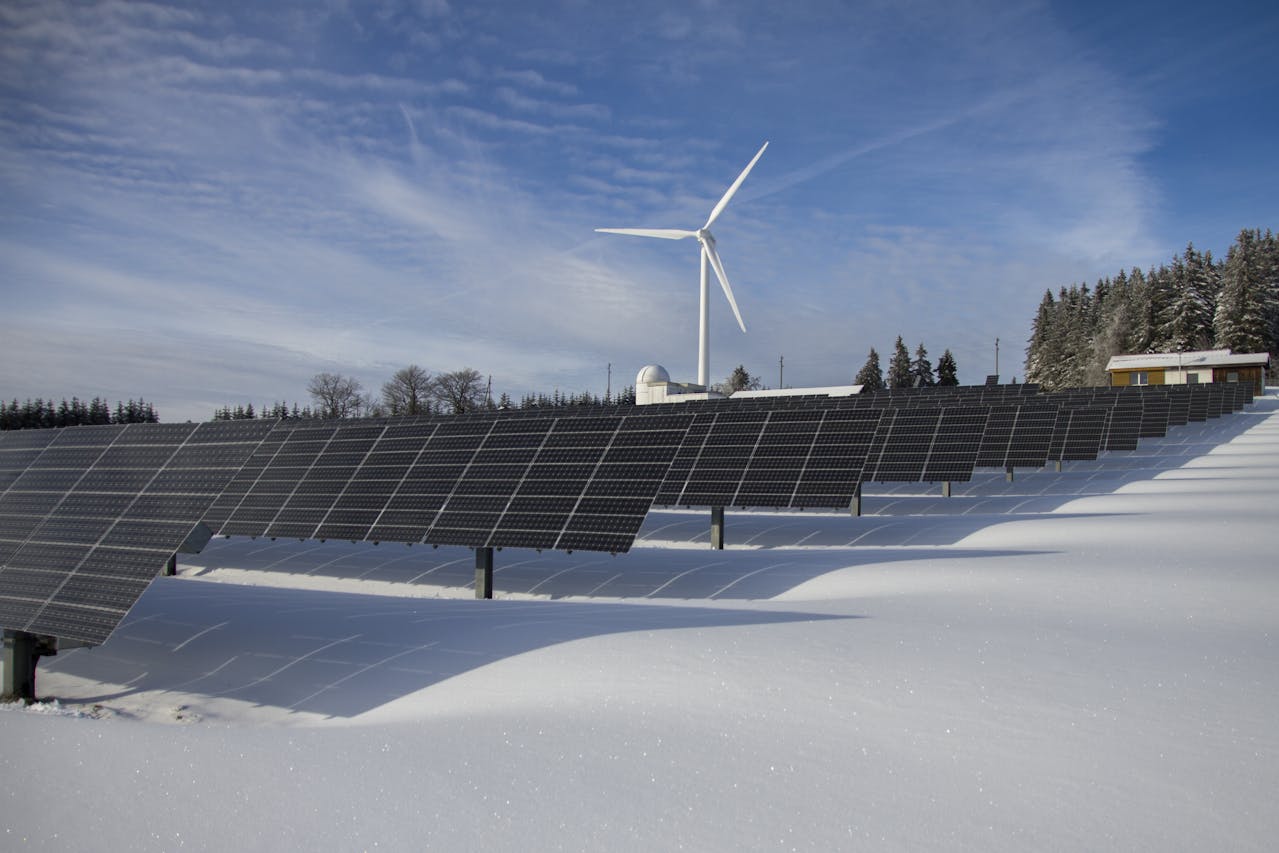Solar panels are a fantastic way to generate clean energy, but what happens when it snows? For many homeowners, snow can seem like a problem for solar panels. Knowing how these panels handle snow helps you keep your system running smoothly all year round.
Effects of Snow on Solar Panels
Snow can impact solar panels in a couple of different ways. The first and most noticeable effect is the reduction in efficiency and output. When snow covers the panels, the sun’s rays can’t reach the solar cells, which means your panels won’t produce energy during heavy snowfalls. However, a light dusting of snow often melts quickly because of the heat generated by the panels themselves and the dark color of the solar cells which absorb sunlight well.
Apart from reduced efficiency, snow can also cause physical stress and potential damage. Accumulated snow, especially when mixed with ice, can add weight onto the panels and the roof. This weight isn’t typically enough to harm a well-installed system, but it’s important to be mindful, especially in areas with heavy snow. Occasionally, snow sliding off too quickly from panels can form ice dams or lead to electrical or physical damage.
To ensure solar panels remain safe and efficient during snowy conditions, regular monitoring and maintenance are essential. Keeping an eye on snow buildup and knowing when to address it can prevent both short-term inefficiencies and long-term issues.
Built-In Features for Snow Management
Solar panels come equipped with several built-in features that help manage snow. One significant feature is the tilt and smooth surface design. The angle of most panels allows snow to slide off naturally. A steep tilt is effective in minimizing snow buildup and can help panels return to full efficiency faster after a snowfall.
Another helpful feature is self-cleaning and melting abilities, often a result of their design and material. Solar panels are made of slick glass, allowing snow to slip away easily once it starts melting. The dark surface color helps absorb any available sunlight, which warms up the panels and aids in melting snow faster.
These built-in features are designed to keep your solar power system functioning optimally, even when weather conditions aren’t ideal. Generally, a combination of smart design and material choices enables panels to handle snow with minimal human intervention. By understanding how these features work, homeowners can better appreciate the technology behind their solar investment and can feel more confident about their system’s resilience against winter weather.
Strategies to Maintain Solar Panel Efficiency During Snow
Keeping your solar panels efficient during snowy conditions might require some hands-on strategies. Snow removal techniques are a practical way to ensure panels are clear and ready to absorb sunlight. One simple method is using a soft broom to gently clear snow off panels. This helps avoid scratching or damaging the surface, which can happen with more abrasive tools.
Using specialized tools can also make the job easier and safer. Snow rakes designed for solar panels or roof applications can extend your reach without climbing onto the roof. These tools are typically lightweight, with foam rollers that safely push snow off without causing harm to the panels.
In addition to these methods, considering small automated systems like heating coils or warm water application can help melt stubborn snow. However, it’s important to consult with solar professionals before implementing these techniques to avoid any risk of damage. By actively managing snow buildup, you can optimize your solar system’s performance throughout the winter months.
Long-Term Maintenance and Inspection Tips
To keep your solar panels in top shape year-round, implementing a long-term maintenance and inspection routine is key. Regular system check-ups allow you to spot any potential issues early, such as minor damages or inefficiencies, especially following winter storms.
Scheduling professional cleaning and maintenance is a wise choice for homeowners who want an expert evaluation. Professionals can inspect the panels and system connections to ensure everything’s working correctly. This is particularly beneficial for assessing any wear caused by snow or ice accumulation over time.
Regular maintenance tasks might include cleaning the panels with water and a soft cloth to remove debris. This keeps the surface clean, so you get maximum sunlight absorption. Periodic inspections ensure your system continues to operate efficiently, extending the life of your solar panels.
Conclusion
Understanding how solar panels handle snow and what you can do to support their efficiency ensures you make the most of your solar investment. By recognizing potential impacts like reduced efficiency and physical stress, and leveraging built-in snow management features, homeowners can proactively address challenges posed by winter weather.
Actively maintaining your solar panels not only improves their performance in snowy conditions but also contributes to a more sustainable energy use year-round. Remember, regular maintenance, professional check-ups, and smart snow management are crucial aspects of keeping your solar system in peak condition amid changing weather patterns.
If you’re looking to optimize your solar energy setup or need advice on winter maintenance, James Kate Roofing & Sola is here to help. Our team can provide you with the expertise you need to keep your solar panels running smoothly, regardless of the season. Contact our solar roofer today to learn more about how we can support your roofing and solar solutions in the Dallas–Fort Worth Metroplex.

